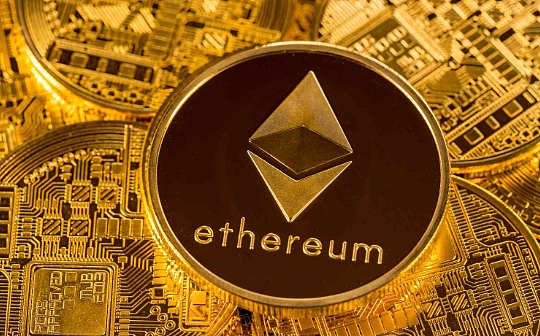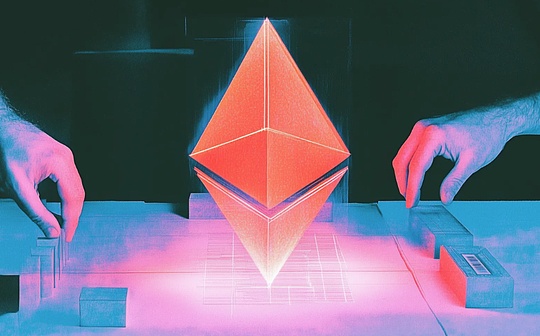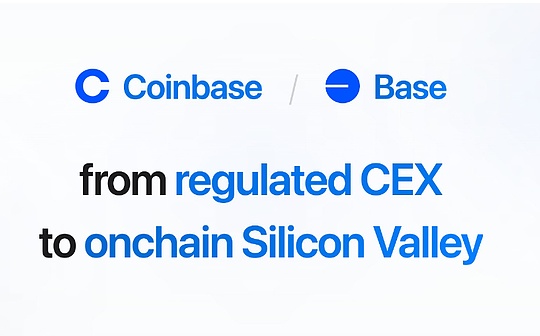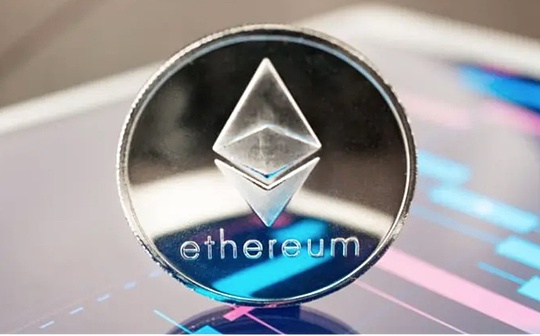
Source: GrayScale; Compilation: Tao Zhu, Bitchain Vision Realm
-
A major feature of public blockchain is that they can run without any central authority.In order to achieve this -at the same time, it also manages the operation of its network -they adopt a set of algorithms and economic incentives, collectively referred to as a consensus mechanism.
-
The Bitcoin network is protected by the consensus mechanism of the miners through the workload (POW) consensus mechanism, and Ethereum is protected by the pledged consensus mechanism through the Poster (POS) consensus mechanism.Unlike miners to protect the POW of the network by computing power, POS requires pledges to show their tokens’ determination to “participate in it” by putting their token capital in risks.
-
The pledges are rewarded by maintaining the services provided by the blockchain.Therefore, tokens who pledge assets and verify transactions can generate income.However, compared to the price fluctuations of the token currency, pledge rewards are usually small, and price fluctuations should be regarded as the main risks and potential returns of most of the investment asset investment.
Public blockchain provides a new way to organize digital business. It is based on the open architecture platform without any central institution.Unlike companies supervised by the board of directors and under the jurisdiction of their national laws, the public blockchain is a global decentralized computer network, which is protected by encryption and economic incentive measures.It can be said to be the core innovation of this new technology for coordinating economic incentive measures and maintaining the normal operation of the network.
Certificate of equity and workload
The blockchain stores the same information on each node in its network.[1] In order to achieve the correct information stored on the Internet, the node must reach a consensus without the help of the central authority.In order to manage this process, each public blockchain contains a “consensus mechanism”: a standardized decision -making algorithm based on economic incentives, which makes the node agree.[2]
The consensus mechanism of Bitcoin is called a workingload certificate (POW).Under POW, the competition of professional service providers, known as miners, solves the problem of computing. The winner who won the blockchain and the tokens reward.[3] These problems are solved through brute force (that is, repeated guessing), so a lot of resources are needed, including early capital expenditure and continuous power costs.Therefore, solving the problem can prove to other network participants to prove that the winning miners have vested economic benefits and can trust the update chain.Miners obtained token awards through their services.
Ethereum initially used the same POW algorithm, but in 2022, it transitioned to a new consensus mechanism, namely the equity certificate (POS).This method also depends on economic incentives; however, network participants do not solve the problem of energy -intensive computing, but to show their vested economic benefits through the “pledge” Ethereum blockchain Ether.The pledgers are responsible for verifying the transaction and updating the blockchain.Those who perform these responsibilities correctly will get additional tokens, and those who violate chain interests will see their rewards “cut” (that is, punishment and reduction).Because the pledgee’s economic interests are consistent with the healthy operation of the chain -they have the benefit of “participating in it” -so they can trust them to verify the transaction and update the network.Unlike mining, pledge consumes a small amount of electricity [4], some people think that this is a more environmentally friendly blockchain consensus method.
Although Bitcoin is still the largest public blockchain calculated by market value, the POS network is becoming more and more popular.For example, more than half of our currency encryption sector and smart contract platform encryption sector use the POS consensus mechanism.Based on the market value, POS -based blockchain accounts for about 30%of the total market value of these encrypted sectors, and 90%of the market value other than Bitcoin (Figure 1).
Figure 1: In addition to Bitcoin, POS is now a mainstream consensus mechanism

Ethereum trading and equity holders’ roles
On a POS blockchain like Ethereum, the pledker is responsible for verifying whether all transactions are in line with network rules.Without this service, the blockchain cannot run.
In order to better geographical understanding the role of the pledker, considering the mechanism of Ethereum transactions will help.As shown in Figure 2, the Ethereum transaction involves about eight steps (Figure 2).Although the user starts the process and some steps may involve other special service providers [5], most steps need to actively participate in the verification device node.Because all Ethereum transactions (or other state changes) are carried out by the coordinated operation of the verification device node, in fact, the pledged provider is responsible for running the blockchain.
Figure 2: Verifications nodes are responsible for handling transactions

By providing these services, pledges are rewarded in the form of additional tokens, which come from the costs paid by the user and the newly issued tokens.On Ethereum, the cost is divided into basic costs and priority costs (“tips”).The network will automatically destroy the Ethereum as a basic cost, which aims to benefit all users by reducing token supply.In addition to the newly issued Ethereum, the pledker can also get the priority fee [6] (Figure 3).Ethereum pledges involved various other complexity. This article does not discuss this article; more detailed information, please refer to the technical appendix.
Figure 3: Ethereum pledged reward comes from priority fees and new issuance

Pledge reward and income
Due to the token award, pledges can get potential income from their assets.In the traditional market, the best analogy may be agricultural land.The land itself has market value, and its price may rise or fall or fall over time, but it can also improve production efficiency by planting crops.Just like the pledge reward is the remuneration of the verification of the blockchain service, crops can be regarded as the remuneration of farming agricultural land services.In these two cases, asset owners are providing useful services and generating service revenue.
The current average reward rate of Ethereum pledges is 3.1%(Figure 4).[7] According to the calculation of the data provider allium,As Ethereum supply increases (when the pledge supply decreases, the agreement provides a higher reward rate to motivate pledge activities), and Ethereum’s pledge reward rate has decreased over time.The daily changes of pledge rewards also reflect the changes in network congestion and priority costs: When network traffic increases, users usually pay higher fees to confirm their transactions.
Figure 4: The current annualized return rate of Ethereum pledges is about 3%

For Ethereum holders who pledge tokens and provide verification services, pledge rewards can be regarded as a source of income.For example, since the beginning of 2023, the price of Ethereum has risen by 173%.[8] During this period, we estimate that the average annualized pledge reward is about 4.5%.[9] Therefore, the assumptions of Ethereum pledges (including price returns and pledge income) will be 192%(Figure 5) [10].The computing assumes that the pledgers have fulfilled their duties correctly (that is, obtaining all rewards and not being cut) and not paying any third -party fees.[11] In practice, the income obtained by the Ethereum pledges will depend on these assumptions.
Figure 5: pledge rewards can be regarded as asset income

Although the pledge reward can gradually increase the return of tokens compared with other assets, Ethereum’s pledge return rate is relatively low in its volatility.In other words, investors should, rather than pledge rewards, are deemed to be the main source of risk and potential returns.For example, Chart 6 shows the return rate of Ethereum compared to its volatility, compared with the “arbitrage transactions” of various currency markets and the dividend yields of certain stock indexes.Investment mainly for income usually has a high rate of return compared to its price fluctuations (otherwise the income/loss brought by price changes will overwhelm income return).Ethereum has a relatively low repayment of pledge returns from its price fluctuations -equivalent to the dividend yield of the US stock index.These types of investment are usually mainly to obtain potential capital returns from price appreciation, rather than income return.
Figure 6: Compared with the volatility of assets, the pledge rewards of Ethereum are moderate

The pledge returns of different POS blockchain are very different.For example, several smaller networks (calculated by market value) provide 10% -20% nominal pledge returns (Figure 7).However, please keep in mind that pledge rewards are usually provided by the combination of transaction fees and newly issued tokens.In many cases, the high pledge return rate is only possible when the token supply inflation rate is high, which may affect the price return.Therefore, investors should also consider the reward rate of pledge (like analysts usually consider actual interest rates in the context of the bond market or currency market).The supply growth of Ethereum is close to zero, so its name and actual pledge return rate is roughly the same -about 3%.In contrast, although Filecoin (Fil) provides 23%of the nominal pledge return rate, it is expected that the amount of circulation will increase by 20%in the next year [12], which means that the actual pledge return rate is only 3%(Figure 7To.
Figure 7: High nominal return rate is usually accompanied by high inflation

Stake
The consensus mechanism is like the blockchain, just like laws and property rights to traditional commercial enterprises: the two are indispensable.With the development of the encryption industry, GrayScale Research estimatesPOS consensus and pledge will become an increasingly important part of the ecosystem.Although the pledge return rate is usually low compared with the price fluctuations of crypto assets, they can become the source of additional income over time, so many token holders are willing to act as verificationrs to get these rewards.
Technical appendix
Although the concept is simple, in practice, pledge involves additional complexity, and several of them will be discussed below.
Four pledge methods
There are four ways to pledge Ethereum: Solo Home Staking, Staking AS A Service, Pooled Staking and Centralized Exchanges.Solo Home Staking is the most influential and most unscrupulous method. It provides complete control and rewards, but requires at least 32 Ethers, a dedicated computer and some technical knowledge to enhance network decentralization.The above discussion is carried out from the perspective of solo standing.The pledge is that the service allows users to commission hardware management, while obtaining native block rewards, which requires 32 Ethereum. The withdrawal key is usually reserved by the user.The pool pledge allows users to pledge the number of Ethereum, which is rewarded by the simplified process involving third -party solutions and liquidity tokens, allowing easily withdrawing, but undertaking third -party risks.The centralized exchange provides the least supervision and efforts, suitable for those who are unwilling to custody, but involve higher trust assumptions and centralized risks, integrate a large number of Ethereum pools and provide reserve options for earning income.
Bind/lifting binding queue
The binding/lifting queue in Ethereum involves the verifications waiting for the pledge or lifting pledge, because the processing rate of each period of the network is called loss (Figure 8).These queues protect the stability of the Ethereum POS consensus.If the authentication is faster than the processing speed, the duration of the queue will increase. If the speed of the authentication is reduced, the queue duration will decrease.CHURN is a rate limit for the entry or exit of verifications in each EPOCH, and adjusts according to the number of active authenticants to maintain consensus stability.One EPOCH is a 32 slot time period. Each slot is 12 seconds for 12 seconds, for a total of 6.4 minutes. During this period, the verifiede proposes and proves the block.Sweep refers to the time required for the specified address after the fund withdrawal verification queue can be extracted; the more verified those, the longer the Sweep delay.
Figure 8: Vermitters usually have to wait to enter and exit

Liquidate derivatives
The creation of liquidity for derivatives (LSD) is to solve the lock nature of pledged Ether and provide liquidity for the pledged assets that could not be obtained.When the user provides the dealer Ether to the liquidity, they will receive a LSD tokens representing Ether.This bin can be exchanged and transferred, and can be used for various decentralized finance (DEFI) activities.LSD has unlocked the liquidity of the pledge Ether. Users can get additional benefits through DEFI activities (such as borrowing, providing liquidity, and use of them as mortgages), and at the same time, they can still get pledge rewards.
Repeat
The pledge involves using the pledged Ether to protect the Ethereum network and other decentralized protocols, so as to get additional rewards.The purpose of pledge is to help developed agreements to use the powerful verification community in Ethereum, without having to bear high costs and resources.Re -pledge was introduced by the third -party agreement Eigenlayer, not introduced by the Ethereum improvement proposal (EIP) or Ethereum route map.
Annotation
[1] Light node only stores the subset of the blockchain information.
[2] Forbar selection rules and social coordination can also be regarded as part of the consensus mechanism.
[3] There are multiple miners who can win, which leads to lonely blocks.
[4] Source: Ethereum.org.
[5] In the initial stage, searchmen, builders and relatives may participate in preparations for transactions.
[6] Priority fees are obtained by block proposals.
[7] In contrast, the U.S. agricultural sector has obtained a yield of about 3.5% in the five years as of 2022, defining the percentage of net farm income accounting for farm assets.Source: US Department of Agriculture, GrayScale Investments.As of the latest report of the US Department of Agriculture, February 2024.
[8] Source: Artemis.Data as of July 28, 2024.
[9] Source: Allium, Grayscale Investments.Data as of July 28, 2024.The simple average of annualized pledge returns since January 1, 2023.
[10] In order to obtain the assumptions of the Ethereum pledker, we calculated the pledge rewards of ETH’s price changes and the pledge rewards of all verifications in this time period, and added returns.This return is hypothetical and does not reflect the actual return of any investor.The actual return may be higher or lower.This assumption does not include costs, and the income of costs will affect the return.
[11] The total return includes the income of maximum extraction value (MEV), which is an extra part of the potential income of block producers based on the transaction order.
[12] Source: Token UNLOCKS, GrayScale Investments.Data as of July 29, 2024.








